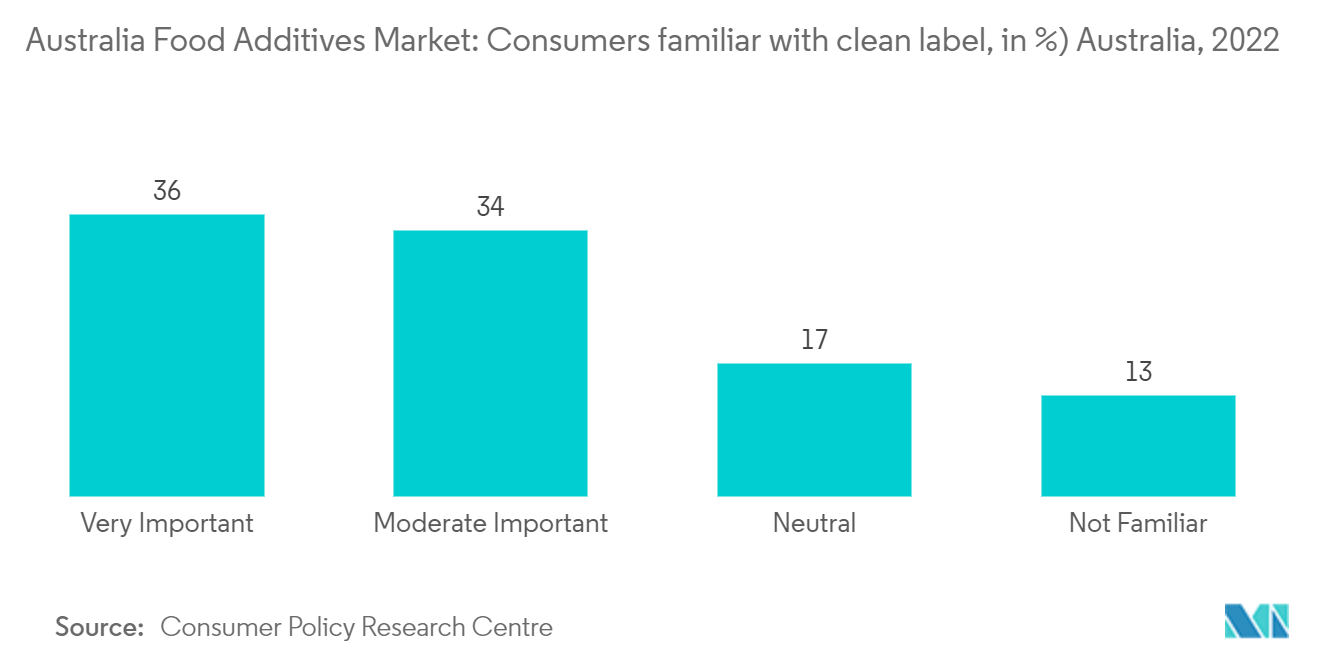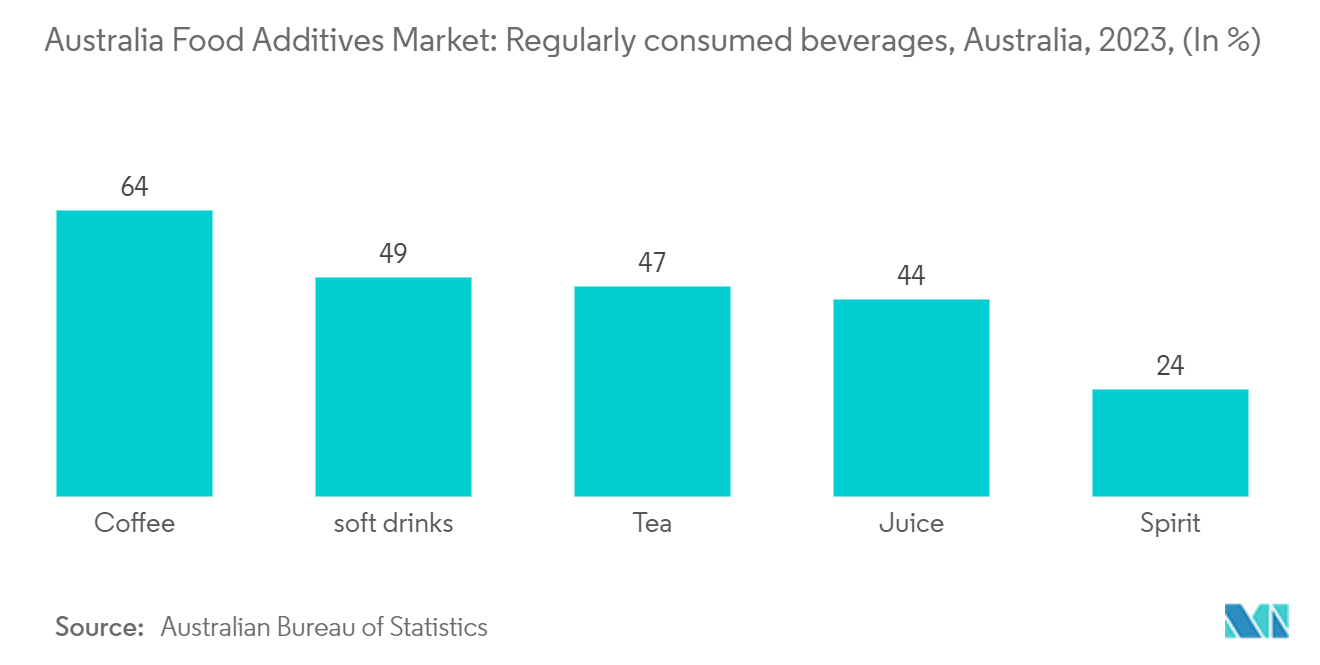Market Trends of Australia Food Additives Industry
Rising Popularity for Clean Label Ingredients
- Consumers demand clean labels on products to learn about the product they are about to consume and at what level. Their interest in identifying the ingredients in food and beverage products has triggered the growth of the clean-label ingredient market.
- Consumers are highly concerned about the long-term effects of the elements they consume regarding nutrition content and their impact on health, environmental sustainability, sourcing, and social responsibility. This has triggered the increasing demand for the clean-label ingredient market. Despite the price difference, they are trying to avoid consuming products that contain synthetic ingredients, as various published studies indicate that natural ingredients help prevent hyperactivity disorders and behavioral issues in children, among other benefits.
- Moreover, several organizations like the Food and Drug Administration (FDA), the World Health Organization (WHO), and many more are constantly involved in the introduction of the General Standard for Food Additives (GSFA) to establish common safety standards, thus, increasing trading of the ingredients in the country.
- Major national and international players are also participating in clean-label initiatives. For instance, in March 2022, DSM launched DelvoGuardcultures, targeting producers looking for clean-label solutions. It also provided them with a solution to extend the shelf life of their dairy products, such as yogurt, fresh cheese, and sour cream.

Increased Utilization in Beverages
- The use of preservatives in the beverage industry is to avoid the change in taste, color of drinks, and bitter aftertaste. Soft drinks are high in water activity, and some rich in vitamins and minerals, so they are an attractive environment for microbes. The usually low pH of the soft drinks, carbonation, sugar content in some of them, and the addition of preservatives help to inhibit the growth of microbes and bacteria.
- The type of chemical preservatives used in beverages depends on the chemical and physical properties of both the antimicrobial preservatives and the beverage type. Some of the most common and significant food additives added to the beverage segment are food flavors, colors, and sweeteners, such as high fructose corn syrup and food enzymes. There is also a broad application of enzymes in the brewing industries. Enactments like cellulase, alpha-amylase, and beta-glucanase are used for better malt separation, extraction yield, and beer filtration and stabilization.
- Moreover, brewers are also starting to experiment with their region's dazzling array of tropical fruits. The winemakers are introducing new innovative flavors to attract more consumers and strengthen their market position. Similarly, due to the rising health concern, consumers are inclined toward natural sweeteners like Stevia. It is widely used in beverages, such as teas, coffees, soft drinks, flavored waters, juices, and alcoholic beverages. Stevia solutions formulated for specific beverage applications can provide a superior, clean, sugar-like taste with reduced linger. Stevia's rapid growth in the beverage market is a testament to its many benefits, including zero calories, 100% natural origin, and being non-caloric, tooth-friendly, non-fermenting, highly soluble, and pH, heat, photo (light), and shelf-stable.


